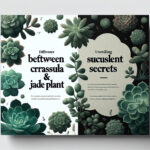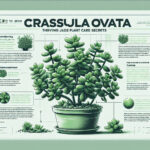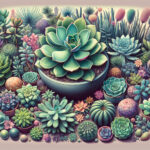Introduction to Crassula and Jade Plants
Welcome to the diverse and dazzling world of succulents! Among the most cherished are Crassula and Jade plants, mainstays in the collections of succulent enthusiasts far and wide. But why, you might ask, do these green pals stir up so much plant-love and confusion at the same time? Let’s dig in and uncover the secrets behind their often mistaken identities.
Imagine walking through a succulent sanctuary, where every corner bursts with plump, water-wise wonders. There, standing proud, are the Crassula and Jade plants, two peas in a pod, sharing characteristics like fleshy leaves and stoic silhouettes. Yet, even the most seasoned green thumbs can admit to pausing, squinting, and asking, “Hang on, aren’t you two the same plant?” The truth is, despite their similar charm, they’re as different as cacti and conifers when you get to know them.
By the way, did you know that there’s an art to keeping these succulents in tip-top shape? It’s not just about occasional water and a sunny sill. For the scoop on nurturing these leafy friends, check out this thorough care guide that walks you through the nuances of helping your plants thrive. But let’s not get ahead of ourselves—we’re here to address that lingering question of identity.
So, come along and join this botanical bonanza as we unravel the mystery. Keep an eye out for the telltale signs that distinguish the robust Crassula from the gentle Jade, and before you know it, you’ll be the one sharing wisdom on the ‘difference between Crassula and Jade plant.’ Stay tuned as we journey through their unique features and learn to celebrate the individuality of these succulent sensations!
Understanding the Crassula Genus
Welcome to a world where plump leaves and stout stems reign supreme! Let’s dive into the mesmerizing realm of the Crassula genus, a spectacular group of plants that includes the well-renowned jade plant, and explore the attributes that make them a phenomenon in the plant kingdom. These succulent sensations are not only a testament to nature’s ingenuity but also an indoor gardener’s delight.
The Crassula genus is indeed versatile, embracing a variety of species that could easily double as a botanist’s treasure chest. From the petite, ground-hugging Crassula muscosa to the towering Crassula ovata, each species flaunts its quirks and charms. Think of them as nature’s little sculptures—each one artfully designed to store water within its fleshy tissues, making it a champion of drought tolerance.
Imagine a plant that thrives on neglect—sounds like a dream, right? That’s practically the Crassula’s calling card. Perfect for those who adore plants but are strapped for time or tend to be forgetful with watering. Discover how to keep these succulent beauties flourishing with minimal fuss!
But don’t be deceived by their easy-going nature; Crassula plants are as diverse as they are resilient. Some present a cascading tapestry of greens, while others stand tall, like green sentinels in a home or office. In fact, if you’re keen on adding a touch of green to your living space but aren’t sure where to start, take a peek at our comprehensive guide to find your perfect Crassula companion.
Envision the Crassula ovata, often known as the jade plant, with its thick, glossy leaves—like emerald drops of dew—dappled with sunlight in a cozy corner of your room. Or picture a collection of Crassula arborescens, each silver-leafed specimen an alluring contrast to its neighbors, casting a silver sheen across a sea of green.
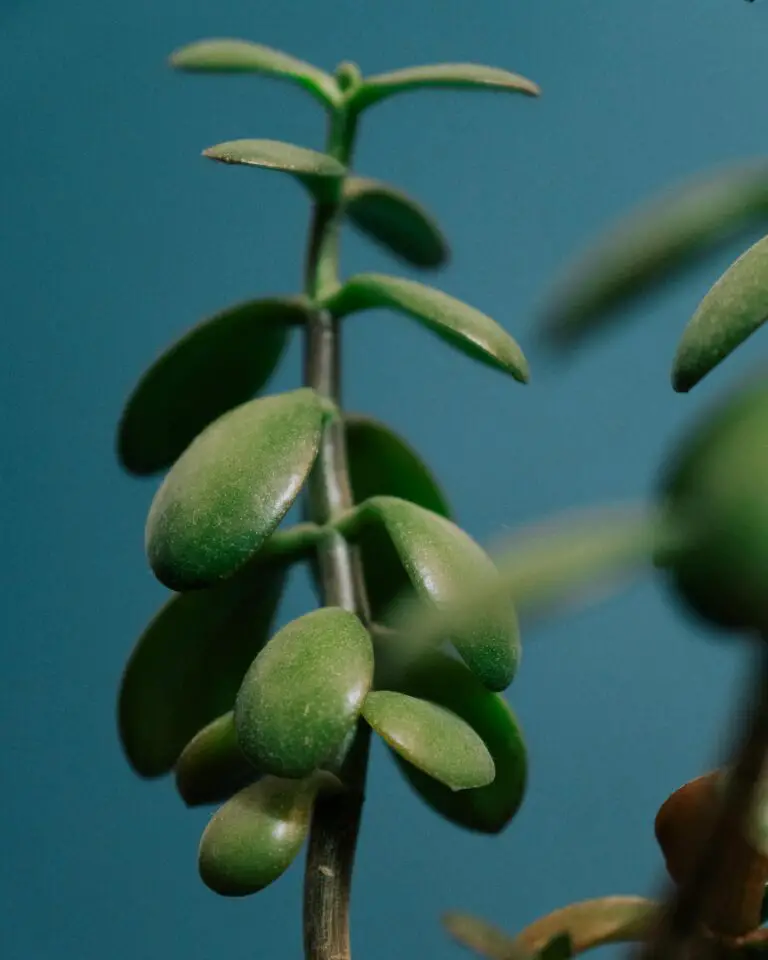
Consider this the Crassula canvas—a place where every streak, spot, and hue is a deliberate stroke by Mother Nature’s paintbrush, waiting to turn your home into a gallery of natural art. So, if you’re tempted to befriend these succulent wonders, why wait? Embrace the beauty of the Crassula and let it re-energize your space and spirit!
Exploring the Jade Plant: Crassula ovata
Welcome to the lustrous world of Crassula ovata, the beloved jade plant that adorns windowsills worldwide. This succulent, often associated with prosperity and good fortune, brings more than just a touch of greenery to the home. Its thick, woody stems and vibrant, glossy leaves have made it a staple among both novice gardeners and skilled horticulturists. But what really sets Crassula ovata apart in the sprawling family of succulents?
For starters, this plump-leafed plant is a master of survival. Originally hailing from the arid regions of South Africa, Crassula ovata has evolved to store water in its leaves, allowing it to thrive even when Mother Nature turns off the taps. It’s a remarkable adaptation to an unforgiving environment, and it’s this resilience that makes the jade plant an excellent choice for those who love greenery but possess a less-than-green thumb.
Natural Habitat and Adaptations
In its natural habitat, Crassula ovata basks in the warm embrace of the sun. Here, the jade plant has become a master of efficiency, opening its pores at night to minimize water loss, a process known as Crassulacean Acid Metabolism (CAM). This nifty trick is akin to a camel stocking up on water for the long haul across the desert – miraculous and, frankly, a bit clever.
Its popularity isn’t just rooted in its drought tolerance. The jade plant’s ability to fit into various decorative styles makes it as versatile as it is endearing. From a single statement piece in a minimalist room to a cluster of potted friends in an urban jungle setup, Crassula ovata adapts as easily to living spaces as it does to dry climates.
Delving into care tips for these succulent stars, it’s evident what draws people to them. They don’t demand much – a sunny spot, a bit of water now and then, and the occasional trim to keep them looking sharp. Yet they give back in spades, purifying the air and providing a serene green presence that can liven up even the dullest of days.
The Allure of the Money Plant
Did we mention that many believe the jade plant to be a harbinger of monetary good fortune? It’s often called the “money plant,” a nickname that stems from the leaf’s resemblance to a jade stone, which is considered lucky in many cultures. Some folks place it by the entrance of their homes or businesses in the hope of inviting financial success. Whether or not the jade plant is a magnet for wealth, it certainly does enrich our lives with its vibrant, verdant beauty.
So, why the fascination with these leafy treasures? Simple. Aside from their striking looks and low-maintenance nature, jade plants are all about growth and renewal. They can be propagated with ease, making them fantastic gifts for friends and loved ones—as if passing on a piece of prosperity.
Intrigued by the charmed life of the jade plant? Check out this video for an up-close and personal look at the ever-impressive Crassula ovata!
[embed_code]
Whether you’re drawn to its plump leaves, a fan of its easy-going attitude, or enchanted by its reputation for attracting fortune, Crassula ovata is more than just a plant—it’s a testament to nature’s artistry and a symbol of resilience. And in today’s fast-paced world, having a touch of tranquility at your fingertips is truly something special.
Key Differences Between Crassula and Jade Plants
Let’s cut straight to the chase: Crassula and Jade Plants, though often lumped together in succulent chats, are not quite the same. With a plethora of Crassula varieties each boasting unique attributes, Crassula ovata – commonly known as the Jade Plant – has its own botanical story to tell. Ready to dive in? Here are the standout differences that plant enthusiasts should take note of.
Starting with appearances, Crassula plants are the chameleons within the succulent world, displaying an array of forms and features. From petite, ground-hugging specimens to imposing tree-like wonders, they flaunt an impressive diversity. Our star Jade Plant, on the other hand, is known for its thick, glossy leaves and stout, tree-like growth pattern. It’s as if it’s auditioning for a part in a miniature forest, promising to bring a piece of lush woodland right to your desktop!
Growth habits are yet another telltale sign. While Crassulas can surprise you with their varying statures and structures, the Jade Plant maintains a consistent image: robust and resilient, it grows slowly but surely into a substantial green gem. And when it comes to care, these plants, though siblings in the succulent family, require tailored approaches. Crassula care involves understanding the individual needs of each variety, while the Jade Plant asks for a straightforward regimen of bright light and occasional watering.
Speaking of a care routine, imagine how handy it would be to have a visual guide for your succulent sanctuary. This video provides a glimpse into the diverse world of Crassula plants, offering a peek at the many “personalities” within this plant group, including the Jade Plant’s signature look.
Now, you might wonder, “Is the care for my Jade Plant drastically different from other Crassulas?” Not necessarily. But just like you wouldn’t mistake a chihuahua for a great dane, despite both being dogs, you shouldn’t assume a one-size-fits-all approach works for every Crassula. Learning the specific needs and quirks of your green companions will ensure they thrive under your guardianship – and become the envy of every plant parent on the block.
Caring for Your Crassula and Jade Plants
When it comes to introducing leafy charm to your space, nothing can beat the whimsical elegance of Crassula and Jade plants. With their plump leaves and woodsy stems, they’ve become a staple in homes eager for a touch of green. But these succulents aren’t just about good looks! Caring for these botanical buddies can be a cinch if you’re savvy to their simple needs.
Picture this: a sun-drenched Crassula basking in the warm embrace of morning light, its leaves glinting like tiny emerald shields. These plants crave the golden kiss of the sun, but they’re not sunbathers by any means! A spot where bright, indirect light can reach them is their happy place. Now, envision your Jade plant — it’s much the same, relishing the daylight but without the full force of the afternoon blaze.

When the parched earth cries out for rain, these succulents are at peace in their dry, cozy beds. Overwatering is akin to tight shoes at a dance party for these drought-resistant darlings. Let the soil dry out completely between waterings and then quench their thirst deeply. This simulates their natural arid homelands, making them dance with vitality.
Think of your Crassula and Jade plants like cherished guests at the dinner table. They don’t need a feast, but regular feeding during the growing season keeps them perky. A balanced, slow-release fertilizer every few months is the gourmet treat that keeps them in lush spirits. But come winter, they are content to fast and rest, gathering strength for the spring.
Potting for Success
Housing your succulents is more than just picking a pot; it’s creating their kingdom. A well-draining abode is paramount, one that allows their roots to breathe and prevents the dread of root rot. Mixing in some coarse sand or perlite with potting soil makes for a royal mix apt for these sovereigns of succulence.
Common Woes to Avoid
Like any living thing, Crassula and Jade plants can encounter hurdles. Overly damp conditions can usher in fungal foes, while tiny pests like spider mites and mealybugs can be uninvited guests. Now, don’t go swinging the chemical sprays just yet! Often, a vigilant eye and some insecticidal soap can clear up any brouhahas without bringing out the big guns.
So there you have it — bask in the simple pleasure of caring for your Crassula and Jade plants. Whether it’s beaming in the morning glow or savoring a well-timed sip of water, they ask for little but give back much — turning your home into an oasis of calm and beauty. Embrace these comparative tips, and you’ll soon be the savant of succulent care!
Popular Varieties of Crassula and How They Stand Out
The Crassula genus is like a treasure trove of succulents, each variety boasting its unique charm. When we dive into this lush world beyond the well-known Jade plant, we uncover a realm brimming with intriguing shapes, textures, and colors that could easily turn any spot into an exotic corner of nature. Today, let’s put the spotlight on some of the most captivating Crassula varieties that are making a splash in the world of flora enthusiasts.
First up is the Crassula ovata ‘Gollum’, often referred to as the ‘Gollum Jade’. This quirky variety has tubular leaves with puckered ends that evoke the imagery of underwater corals or maybe even the fingers of some mythical sea creature. It’s not just its whimsical appearance that catches the eye; it’s also the way it adapts to living indoors, making it ideal for those who want a touch of fantasy in their living space.
Now, imagine a plant that mimics the ripples of the ocean. The Crassula ‘Blue Wave’, distinguished by its rounded and tightly stacked leaves, does just that. It sports a powdery blue hue with delicate red edges that seem to dance in harmony with the light. It’s a living piece of art that brings serenity and a dash of cool elegance to any collection.
Speaking of art, the Crassula ‘Buddha’s Temple’ is a marvel of symmetry. Its leaves meticulously align to form a miniature, four-sided tower reminiscent of sacred Oriental architecture. As it matures, the ‘Buddha’s Temple’ turns breathtakingly reddish under the sun’s caress, much like a structure touched by the warm glow of a setting sun.
And let’s not bypass the Crassula capitella ‘Campfire’—a fiery spectacle that ignites the imagination. In the cooler months, its green foliage transforms into brilliant shades of red and orange, as if the plant itself were ablaze with flames. It’s a robust grower that easily spreads its warmth in both gardens and indoor displays.
Each of these Crassula varieties brings something exceptional to the succulent world. Whether it’s the seemingly animated ‘Gollum’, the tranquil ‘Blue Wave’, the sacred geometry of ‘Buddha’s Temple’, or the vibrant ‘Campfire’, they all stand out with their extraordinary aesthetics and adaptable natures. It’s no wonder that these varieties are continually growing in popularity, inspiring both beginners and seasoned collectors to expand their green horizons.
Of course, the true beauty of Crassula varieties is best appreciated in person. The following image captures the essence of their diversity and allure:

As we’ve seen, the difference between Crassula and Jade plants is not just botanical—it’s a journey into a world of endless variety and natural wonder. These Crassula varieties are more than just plants; they are living sculptures that remind us of the boundless creativity woven into the tapestry of nature. So next time you encounter a Crassula, take a moment to appreciate the little details that make each one a masterpiece in its own right.
The Significance of Jade Plants in Culture
Embarking on a journey through various cultures, the Jade plant emerges as a beloved symbol of good fortune and prosperity. This succulent, with its rich, emerald leaves, goes by many names—one of the most intriguing being the ‘Money plant.’ But the allure of the Jade plant extends beyond its nickname; there’s an enchanting tapestry of beliefs woven through its worldwide presence.
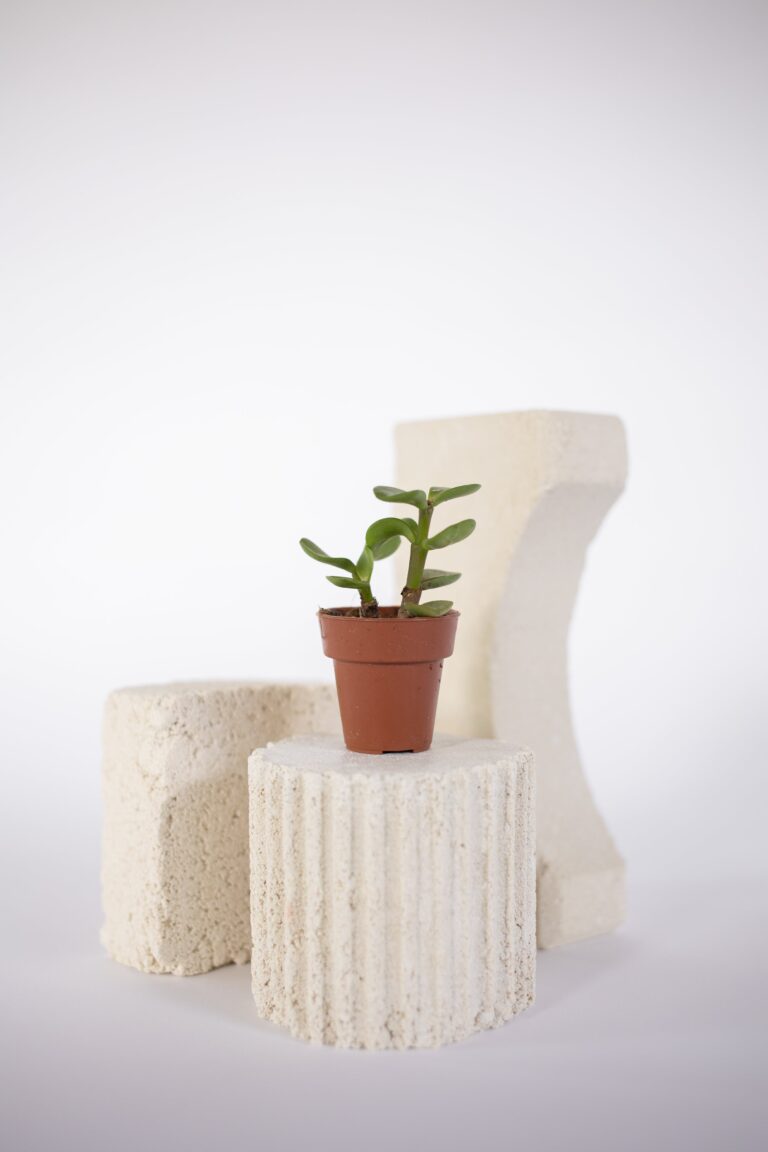
In the bustling streets of Asia, the Jade plant takes on the role of a guardian, poised at the entrance of homes and businesses alike. It’s said that the plant’s vibrant green leaves attract wealth and its woody stems offer stability—a combination as desirable in life as it is in financial ventures. Thus, these plants frequently occupy spaces of commerce, silently watching transactions unfold, a silent nod to growth and continuous renewal.
But the narrative of the Jade plant stretches even further, dipping into the spiritual waters of Feng Shui. Oriental philosophies speak of the plant’s ability to harness Chi, or life force energy—enhancing the flow of positivity and abundance within indoor spaces. Practitioners of this ancient art thoughtfully place Jade plants in ways that are said to maximize their energetic benefits, turning homes into havens of balance and harmony.
Across the ocean, in Western traditions, Jade plants are a common gift for housewarmings. The practice suggests a wish for prosperity for the new homeowners, a gesture of goodwill for their journey ahead. Even in office settings, these hardy plants are appreciated for their low-maintenance nature, representing resilience and growth despite busy, sometimes challenging environments.
Anecdotes and real-life examples abound—stories of Jade plants thriving in forgotten office corners, only to be noticed when a streak of luck hits the company. Or tales of a thriving Jade plant being passed down through generations, each pruning and potting a metaphor for family heritage and sustained abundance.
Why ‘Money Plants’ are More Than Just a Name
The moniker ‘Money plant’ speaks volumes. It encapsulates the deep-rooted belief shared by countless individuals that the Jade plant subjects its keeper to financial blessing. It’s not just about the aesthetics of the lush foliage, but also what it represents: the possibility that even in the concrete jungle, growth is always within reach. Whether it’s a storefront in Singapore or a sunlit ledge in San Francisco, the Jade plant continues to be a botanical beacon of hope and success, gripping hearts and inspiring stories around the globe.
Frequently Asked Questions
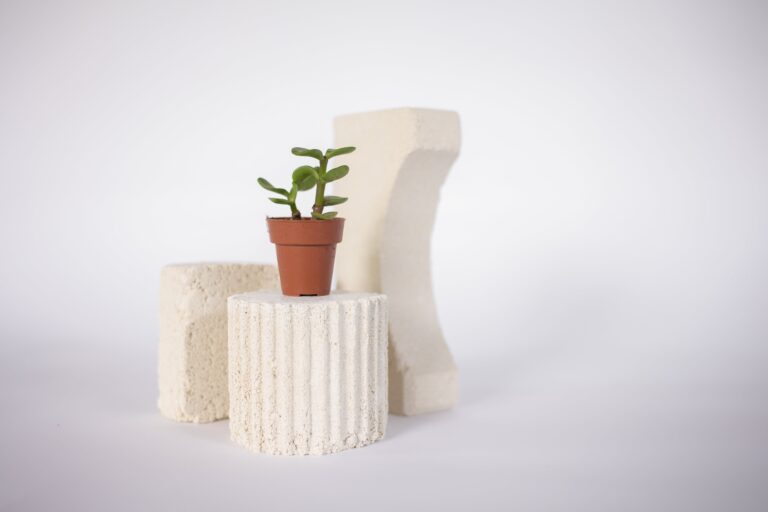
Whether you’re a seasoned gardener or just starting to dabble in the world of succulents, you might find yourself pondering over the charming Crassula and the splendid Jade plant. Let’s dive into some of the most common quandaries enthusiasts have about these green companions!
Can Crassula and Jade plants crossbreed?
In the dance of nature, can Crassula and Jade plants tango to create hybrid flora? While crossbreeding in the botanical universe is not uncommon, it’s important to know that not all plants are willing partners. Given their close relation but distinct genetics, the Crassula and Jade might need a little extra science on their side to successfully cross-pollinate. Most natural occurrences tend to stay within their own circles, you could say.
Are all Crassula plants considered Jade plants?
Conundrum alert! It’s like asking if all sparkling wines are Champagne. To be clear, Crassula is a grand genre of plants with varied personalities, while the Jade plant, or Crassula ovata, is the star of the Crassula ensemble. Not all that is green and succulent can be crowned as Jade; only those with thick, glossy, Jade-colored leaves fit the bill.
How can I tell a Crassula ovata from other Crassulas?
Picture this: you’re wandering through your local nursery, and two succulents catch your eye. Both green, both gorgeous. But how to tell which one is the celeb, the Crassula ovata? Remember, it’s the one that looks like it’s storing secrets (and water!) in its fleshy, coin-shaped leaves. For a Crassula ovata, look for the lustrous, paddle-shaped leaves that seem to whisper ‘fortune’ with their opulent green hue.
Fret not if these questions lead to more curiosity; that’s the joy of the plant world! Remember, every plant has its own tale, and learning to read the subtle differences is what makes gardening an ongoing adventure.
